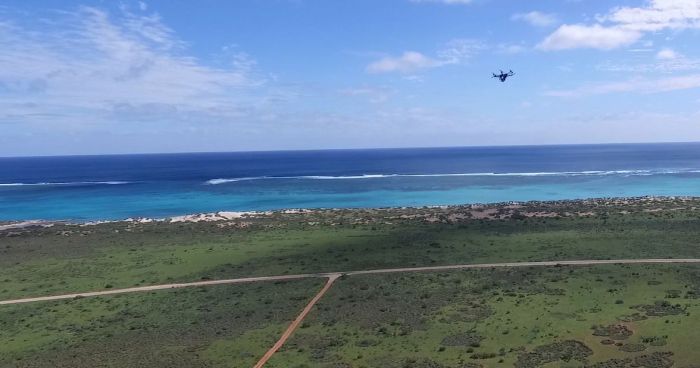Coral reefs and other ecosystems can now be viewed in a whole new level of detail, thanks to new hyperspectral drone cameras developed right here in Australia.
Remote sensing researches from Queensland University of Technology recently debuted their world-leading miniature drones at Ningaloo Reef in Western Australia, capturing ultra high resolution images so detailed that they could identify coral species, algae and sand. The drones surveyed around 40 hectares of the reef at 100m above ground in just 30 minutes.
 Normal cameras only capture red, green and blue on the light spectrum, whereas hyperspectral cameras allow for 270 bands of the spectrum and a spatial resolution of approximately 15cm per pixel. This outstrips the USA’s CORAL system which takes images at a resolution of 7.5m per pixel.
Normal cameras only capture red, green and blue on the light spectrum, whereas hyperspectral cameras allow for 270 bands of the spectrum and a spatial resolution of approximately 15cm per pixel. This outstrips the USA’s CORAL system which takes images at a resolution of 7.5m per pixel.
This level of detail means different objects leave a hyper spectral signature or fingerprint that allows researchers and scientists to monitor ecosystems for environmental changes. This is particularly important with the current threat faced by our coral reefs.
“We’re building artificial intelligence algorithms that can automatically recognise and classify these unique signatures – the hyperspectral equivalent of a police ‘fingerprint database’, said Project leader Associate Professor Felipe Gonzalez.
The data is being used to develop software that analyses the data from Ningaloo Reef remotely. Professor Gonzalez and his team’s next goal is to creating housing that allows the camera to be operated underwater via marine robots.
Watch the video below to find out more about this exciting project.
Source: Drones go hyper spectral to expose Ningaloo Reef in new detail, Spatial Source, 1st February 2017
